Text and Photos by Henrylito D. Tacio
“This is a city where romance means wonks in love discussing policy late into the night.” — The New York Times on Washington, D.C.
The White House may be the seat of the United States’ highest official, but it’s Washington Monument that grabs the attention of visitors, especially first-timers. Whether you’re in a taxi, ship, or plane, you will never miss it. After all, it’s the tallest building you can find in Washington, D.C. (District of Columbia).
Washington Monument is located just west of the Smithsonian museums (which locals call The Mall), between 15th and 17th Streets. Once you get there, don’t expect a taxi near the place. You have to walk and walk and walk. That was what we did during our recent visit.
“The Washington Monument, at 555 feet tall and 90,854 tons, is the largest free-standing obelisk of its kind and a gargantuan, phallic shrine to America’s first president,” notes Let’s Go: Washington, D.C. “No cement holds the loose granite blocks together, but the monument is incredibly stable, capable of withstanding a tornado blowing at 145 miles per hour.”
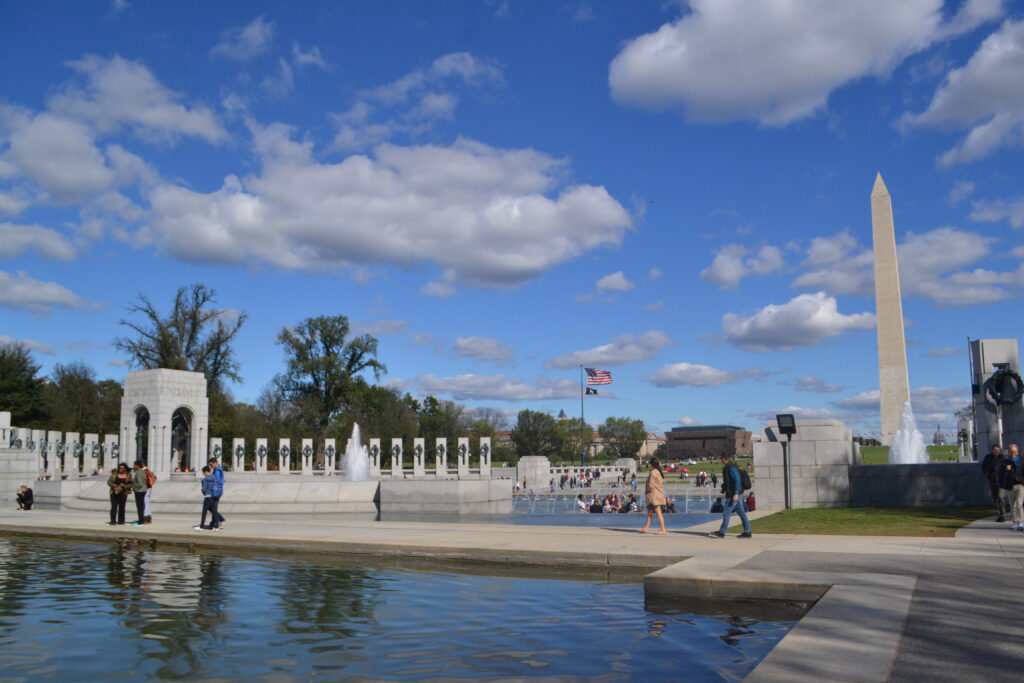
The WWI Memorial 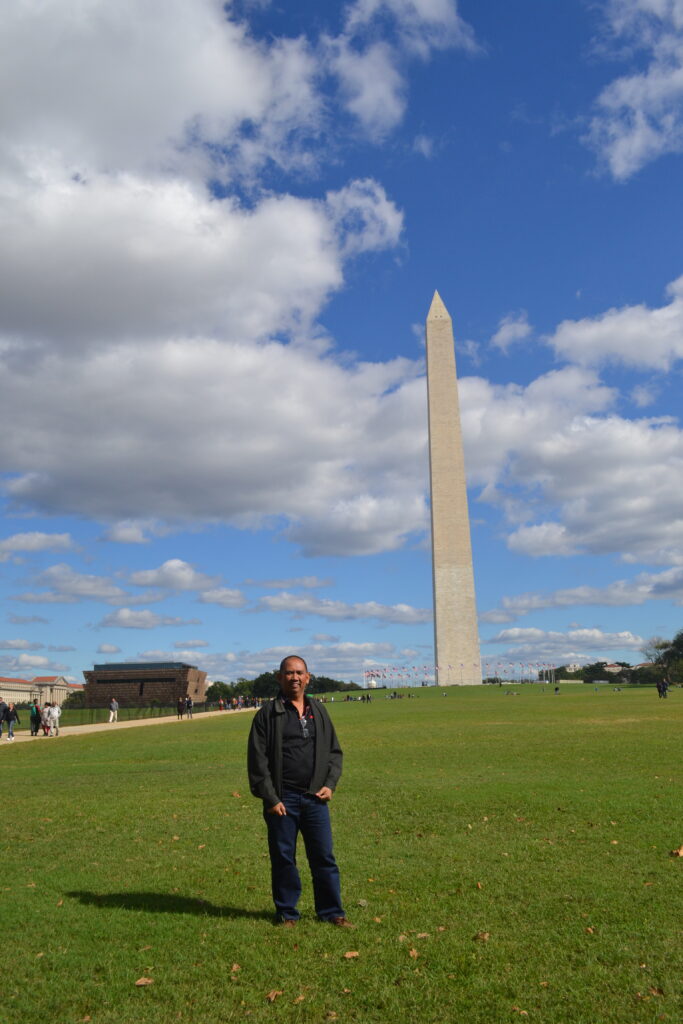
The Author and the Monument
If that’s not reassuring, here’s more information: “A healthy sway of an eighth of an inch in 30 miles per hour winds helps to maintain stability. The monument tilts about 3 inches to the north on hot sunny days, as the stones on the sunlit side expand and those on the cooler, shaded side contract.”
Among the founders of the United States, George Washington — who was unanimously elected the first president in 1789 — was the only one who earned the title “Father of his Country,” in recognition of his leadership in the cause of American independence.
“With this monument, the citizens of the United States show their enduring gratitude and respect,” said the brochure produced by the National Park Service of the US Department of the Interior (USDI).
But there’s an interesting story on how the monument came to be. The original plan called for the erection of an equestrian statue of Washington in the Mall’s center. Congress, however, bickered over the plan for the monument for years. In 1883, prominent Washington residents formed the Washington National Monument Society, a private organization dedicated to constructing the monument.

Jefferson Monument 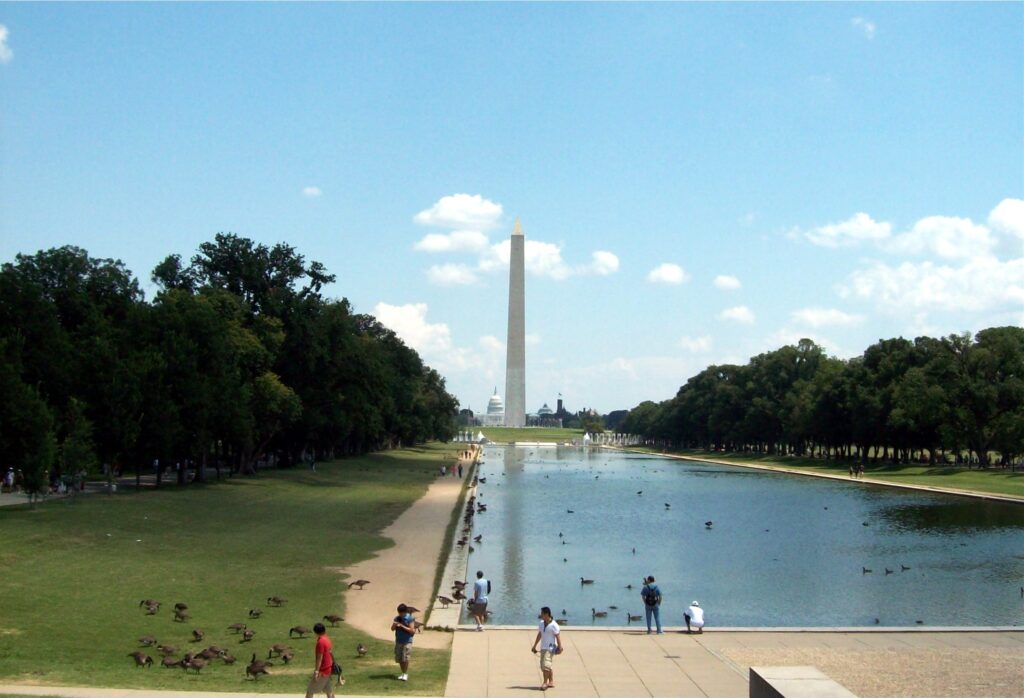
Taken from the reflecting pool
The society accepted a design by Treasury Building architect Robert Mills that called for a variation of the present obelisk with a one-story, 30-column temple around the base. The cornerstone was laid on July 4, 1848, in a ceremony attended by President James K. Polk and other dignitaries, among whom were representatives Abraham Lincoln and Andrew Johnson.
The monument rose steadily to 156 feet, financed by popular subscriptions collected by the society. But in 1858, construction stopped due to a lack of funding. Let’s Go reported: “Alabama couldn’t afford a cash contribution to a fund aimed at sustaining construction, so the state sent a stone instead, starting a trend that saved the monument.”
Over 100 nations, states, towns, and individuals sent stones; donors ranged from the Cherokee Nation to the American residents of Fu-Cho Fu, China. According to Let’s Go, when the Vatican sent a block of marble in 1854, the Know-Nothings, an anti-Catholic political party, protested by stealing “the Pope’s stone.”
During the Civil War, the half-finished monument was nicknamed the Beef Depot Monument to honor the cattle that Army quartermasters herded on the grounds. When construction resumed after the war, builders switched to a different quarry because they had exhausted the stone in the original quarry.
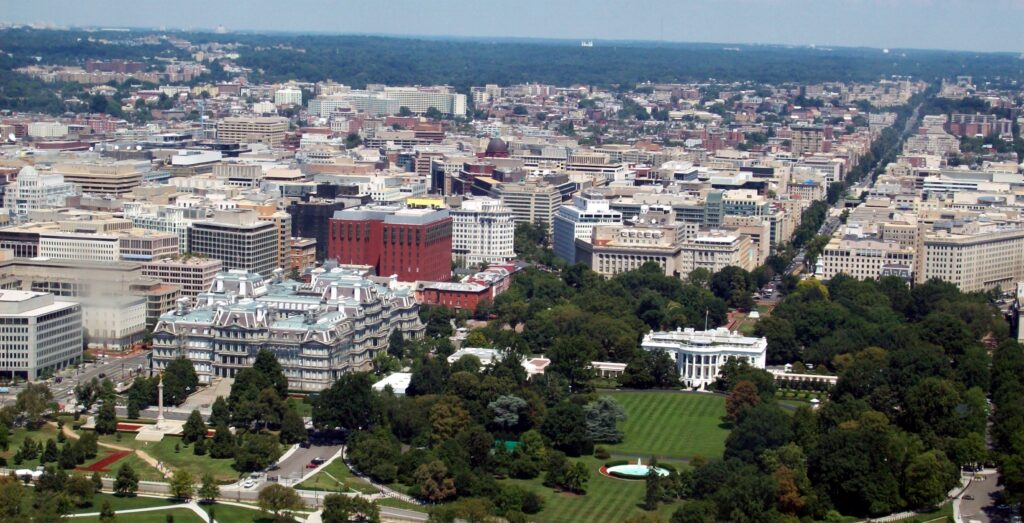
Taken from the top of the Washington Monument 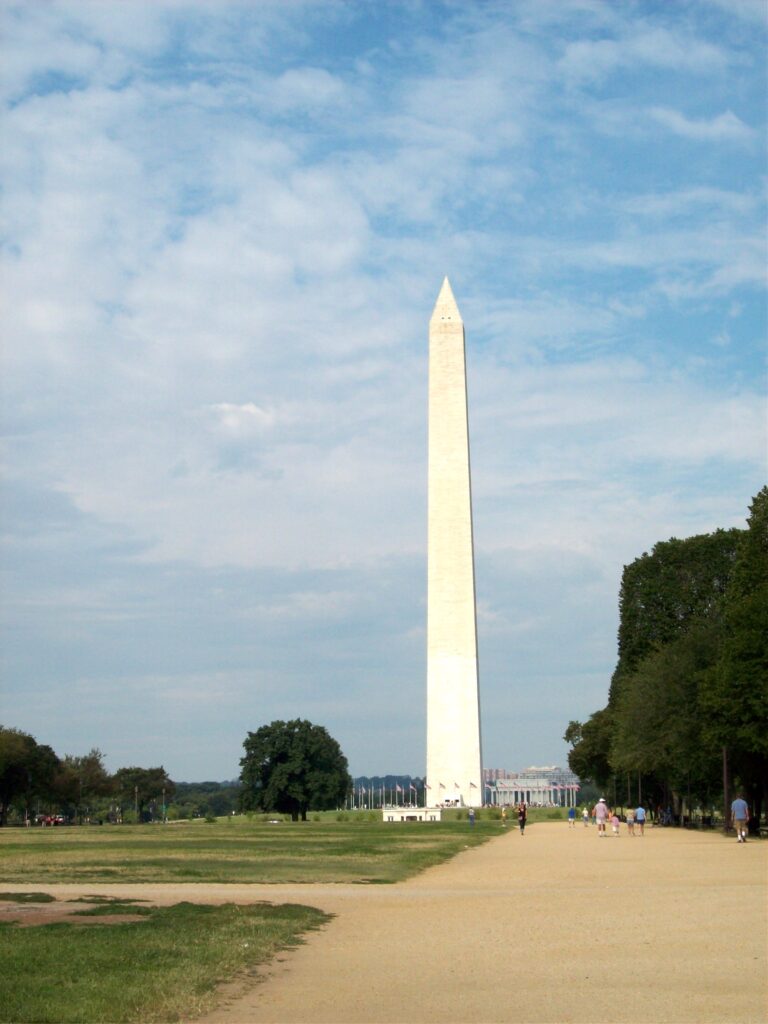
From a distance
In 1878, Lt. Col. Thomas Casey of the U.S. Army Corps of Engineers took control and simplified the design done by Mills. “In December 1884, a 3,300-pound marble capstone was placed on the obelisk and topped with a 9-inch pyramid of cast aluminum, a rare metal in those days,” the brochure published by USDI said.
On February 21, 1885, the monument was finally dedicated.
Today, the monument is open to the public daily except December 25. Going up is a breezy 70-second elevator ride. Once you are on top, you get the opportunity of seeing the spectacular view of the whole city. You get to spend about 10 minutes or so. As the place was not big enough, all I did was take photos from different angles.
Once you’re back on land, be sure to proceed immediately to where the Reflecting Pool is. Located between the monument and the Lincoln Memorial, it reflects the famed obelisk in seven million gallons of water. Modeled after similar pools at Versailles and the Taj Mahal, the pool’s design minimizes wind ripples and sharpens the monument’s watery visage.

